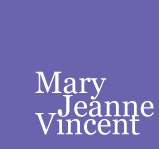
The Gutsy Guide to a Successful Search
August 8, 2016
The Power of Employee Referrals
August 8, 2016Today’s cover letter is often an e-note. Short, sweet and to-the-point, it is easy to read on a smartphone.
You may choose to write an e-note when you want to upload your résumé to a job board, apply online via a company’s website or include a cover letter in the body of your email. Your e-note should communicate your message in half the space of a traditional cover letter.
Use a cover letter when you are sending your résumé by snail mail, planning to include it as an attachment when a more formal presentation is required, and applying for positions in science and academia. A longer cover letter is also the best choice when contacting a recruiter since it allows you to provide more in-depth information about your qualifications.
As with any email, your first challenge with the e-note is getting the hiring manager to read it; therefore, it is imperative that you create a compelling subject line. Your subject line might be the job title — Neurovascular Sales Rep., job title and requisition number — Food & Beverage Manager Req. #234-0123, referral source — Referred by Amy Walters, or include a fact that sets you apart from other candidates — Marketing Assistant & Social Media Maven.
If you have the hiring manager’s name or can find it with a little research, use it. You earn extra points by using the manager’s name so include it when you can. If you cannot find the hiring manager’s name, skip the salutation and begin with an opening sentence that gets to the point. For example, “If you are looking for a facilities manager with a record for increasing bookings, look no further.”
Your opening paragraph may be as simple as one sentence and generally not more than three.
You can lead into the body of the note using an introductory phrase such as, “A few of my notable achievements include . . .” or “Three key areas of expertise are . . .” Of course, if you are being referred by someone inside the organization (see “The Power of Employee Referrals”, Oct, 29, 2013) mention your contact immediately.
In the body of the e-note include high value facts and information such as career or project highlights, a theme that demonstrates related expertise developed over the course of your career, or a background story that makes the case for you being the ideal candidate. Consider using bullets to convey this information keeping each bullet to one line. This makes for a quick, easy read.
The closing paragraph might be a call to action, identify next steps, request a meeting or summarize your experience.
Complete the e-note with a signature block that includes your name, phone number, email, and if you like, your LinkedIn url or Twitter handle. It is increasingly common to eliminate your address from résumés, cover letters and e-notes unless doing so will positively influence your candidacy. It is more common to state your general location, “San Francisco Bay Area” or “New York Metro Area”.
Whatever your choice, e-note or cover letter, it is your responsibility to convey to the hiring manager who you are and why you are qualified for the position you seek. This introductory note invites the reader to review your qualifications as outlined in your résumé.
Mary Jeanne Vincent is a career expert and strategist with a private coaching practice in Monterey. She may be reached at 831.657.9151 or mjv@careercoachmjv.com.




